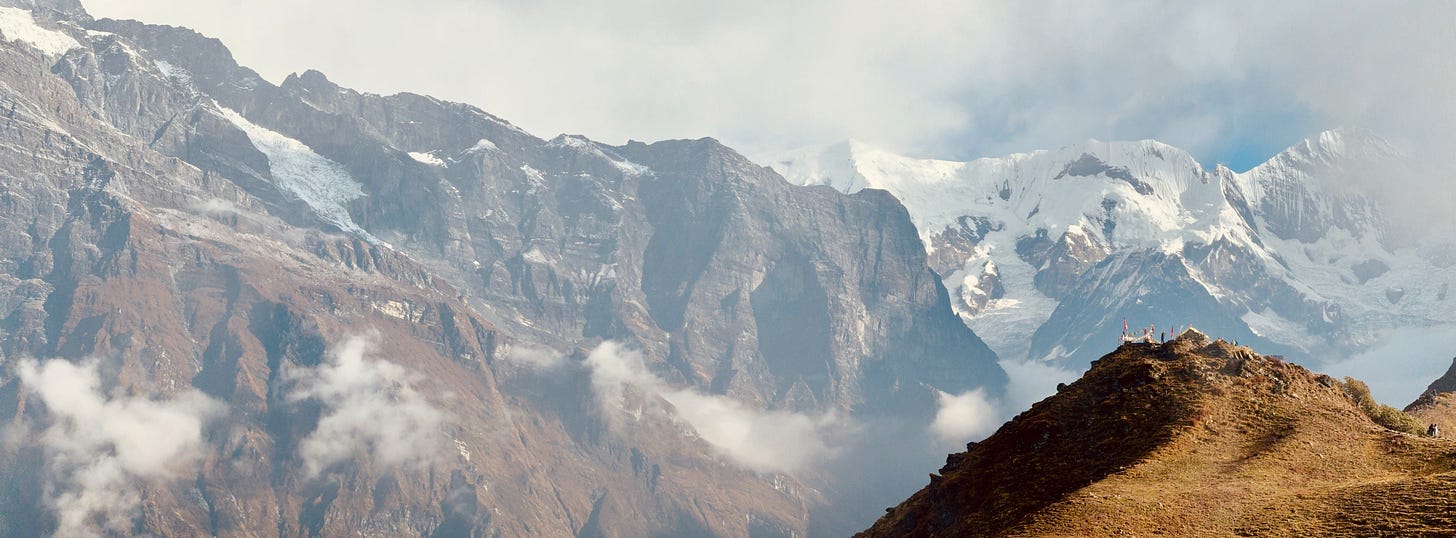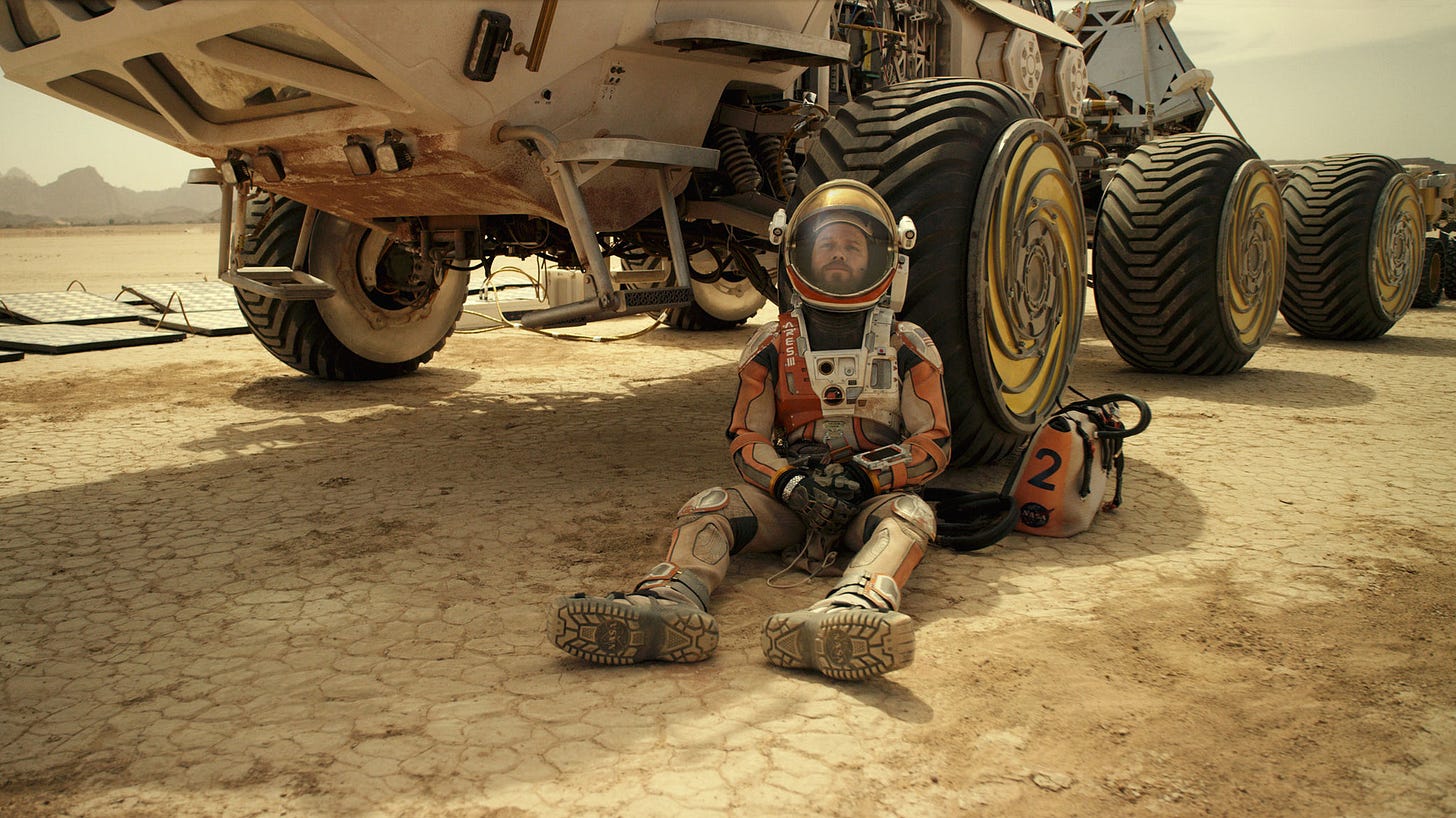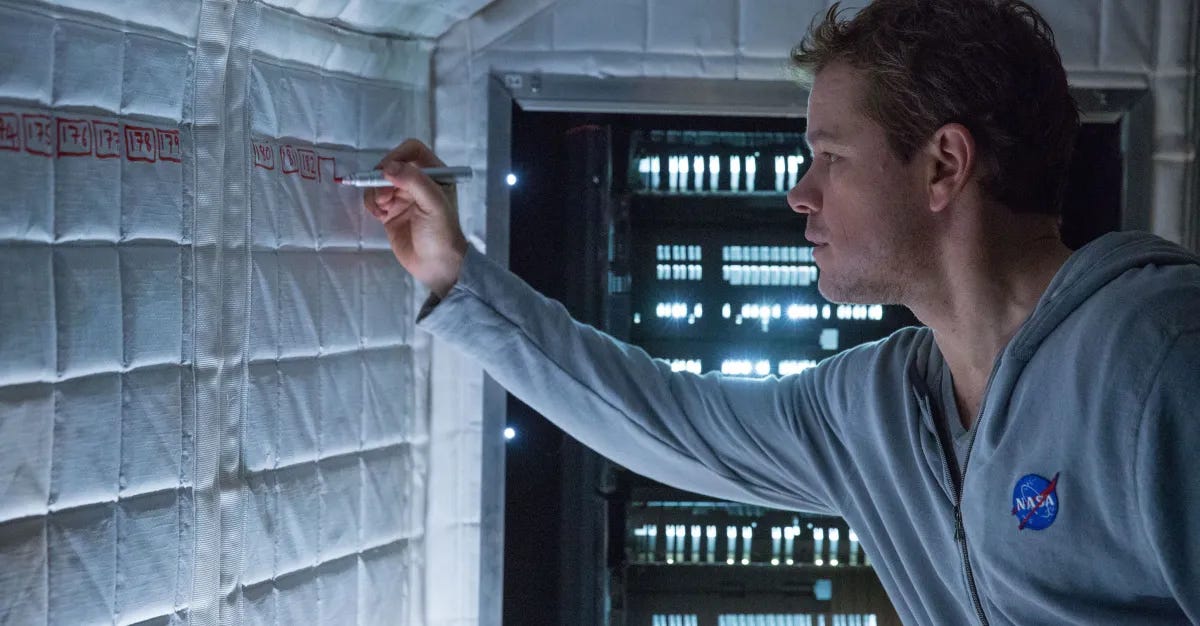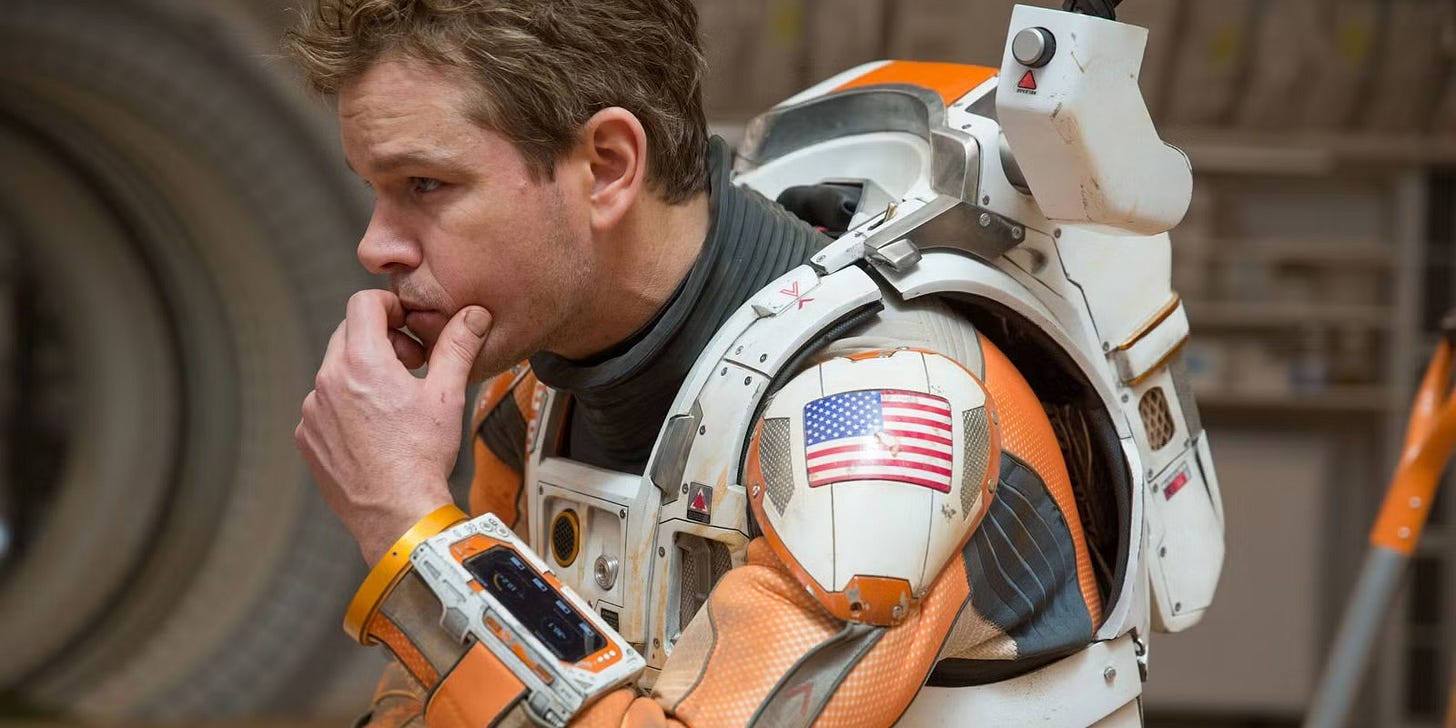What to do in the face of overwhelming odds
Or, “How to grow potatoes in your own poop”, according to THE MARTIAN
Our trek 4200 meters up into The Himalayas began easily enough.
I’d expected to navigate a remote mountain wilderness in the far reaches of Nepal, so “the road” that facilitated much of the route caught me off guard:
In fact, we encountered quite a bit of infrastructure along the way.
A smattering of villages hosted souvenir shops hawking trinkets, hallucinogenic “mad honey”, and yak cheese. The frequent teahouses offered refreshment, shelter from the rain, overnight lodging - even gas-powered hot showers at lower altitudes, made possible by donkeys packing in loads of fuel tanks and other supplies:
Naïvely, I’d half-expected a more challenging ascent, chimneying between rock pillars and ice ridges like Tenzing Norgay and Sir Edmund Hillary on Everest.
“Be careful what you wish for,” they say…
The trek turned “challenging” the morning we were scheduled to push onward to the viewpoint overlooking Mardi Himal and the rest of the range.
I desperately wanted to catch sunrise over the mountains, but we had a problem. There was no way we’d make it in time. Our guide, Narayan - who’d gotten to know us over the preceding few days - hesitated for a moment. Then he proposed a solution: “There is a shortcut,” he said. I fixed him with my headlamp, intrigued. “It’s a little adventurous,” he cautioned, “But, uh… I think you can do it.”
We veered off the beaten path, literally up the side of the mountain. The slope erupted skyward into the night. We scrambled over rocks and clutched at roots, clawing for purchase. Before we knew it, we were climbing up an exposed ridgeline still slick with rain, in the dark, with steep drop-offs on either side. “Don’t look down!”, Narayan urged. He clasped my hand and steadied me around a narrow ledge.
“Has anyone ever died on a trek you’ve led?”, my companion called after him.
To which he replied: “Not yet”!
I’m happy to report that Narayan’s track record remains perfect. Sipping masala tea in the bracing cold of the morning, we witnessed the tail end of sunrise over the mountains, right before the clouds closed and erased them from view:
That experience gave me a taste of what it must have been like to be among the first to explore “the roof of the world”. Which is probably what inspired me to seek out 2015’s The Martian, a film about “the first person to be alone on an entire planet”.
The film hit close to home in more ways than one, as we’ll see!
Directed by Ridley Scott - the mastermind behind two of my favorites, Alien and Blade Runner - The Martian forgoes those films’ grim tones to tell an uncharacteristically positive story. It adapts Andy Weir’s first novel, which he wrote in the spirit of scientific optimism, openness, and accuracy.
Following an accident on Mars, astronaut Mark Watney gets left behind by his crewmates. Luckily, Watney is a botanist with a relentlessly can-do spirit. Instead of surrendering to the seeming hopelessness of his situation, he figures out how to move forward. He improvises a greenhouse to grow potatoes in his own poop… Reestablishes contact with NASA… And acts on a brazen rescue plan devised by the best and brightest minds from around the world, all bent on bringing him home.
“In the face of overwhelming odds, I'm left with only one option,” Watney concludes. “I'm gonna have to science the shit out of this.”
Matt Damon’s affable performance marshals a “heck yes you are!” from the audience. This is the kind of film that crackles with the beautiful and rare energy of a cast and crew that’s clearly having fun with the material.
As a result, you don’t feel the 2.5 hour running time. It’s a delight that breezes by.
Stylistically, The Martian is a relatively straight-forward affair, but its air of effortlessness belies the no-nonsense professionalism underpinning many of the creative decisions. Seven Academy Award nominations (Best Picture, Best Actor, Best Adapted Screenplay, Best Production Design, Best Sound Editing, Best Sound Mixing, and Best Visual Effects) attest to the precision of the craft across the board.
The way in which exposition is disguised is case in point, and it’s especially interesting to me as a screenwriter. Watney’s a scientist solving complex problems alone on a desolate planet… How is the audience supposed to follow the action in a way that doesn’t feel patronizing or distractingly contrived?
Drew Goddard, who adapted Weir’s book in writing the screenplay, solves this problem by creating a believable vehicle for Watney’s explanations; ie., his video diaries. They’re a natural way for Watney to speak directly to the audience. We never question why he’s recording the entries; he’s documenting his survival for the record.
“You want to make sure there’s a reason for any time he’s talking to the camera and that’s challenging,” Goddard shares in an interview. “But that was the rules we set out for ourselves. We didn’t want it to just be ‘Here I am to explain the movie to the audience,’ which is a trap you can fall into with narration… That’s what sets up the prism in which we’re viewing the whole movie. Once you do that, it allows you to open up outward and get more existential in the back half of the movie.”
I also love how the film capitalizes on a lesson I learned from a Pixar story consultant:
Process is mesmerizing to watch on film.
Remember those “poop potatoes”? Let’s watch Watney work out how to produce enough water to grow them on an inhospitable planet, solving his food supply problem. Also note how the video diary clearly contextualizes Watney’s process:
It’s deeply satisfying to watch it come together. Watney burns the hydrogen, survives an explosion, and tries again... He counts the Martian days, cleans a helmet, checks on solar panels… And ultimately discovers a fledgling potato sprout. “I don't want to come off as arrogant here, but I'm the greatest botanist on this planet,” he boasts.
And rightly so! Due to lack of competition, granted - but also due to his process. It’s a captivating show of expertise that leverages the inherently visual language of film; I could watch Watney solve problems all day.
In fact, really, every crisis in The Martian is an exercise in problem solving.
If Watney succeeds in keeping his cool - if he can persist in the face of despair and loneliness - then he can survive whatever Mars throws his way. [Spoiler alert] Including propelling himself through space like Iron Man by puncturing his pressure suit, to rendezvous with his crewmates’ rescue vessel in the film’s thrilling climax!
“At some point, everything’s gonna go south on you,” he instructs a class of Astronaut Candidates back on Earth. “Everything's going to go south and you're going to say, this is it. This is how I end.” And then he shares an insight that’s relevant to all of us:
“Now you can either accept that, or you can get to work. That's all it is. You just begin. You do the math. You solve one problem... And you solve the next one... And then the next. And If you solve enough problems, you get to come home.”
I’ve been very busy these past few months launching The Lighthouse for you all. Honestly, there’ve been moments I’ve been tempted to give up, especially after pouring so much into Lights Film School for so many years. Progress on this new project has not been a straight line, and as anyone who’s ever penned a screenplay knows, writing can be isolating. Its impact can be difficult to see and quantify.
Whenever you’re doing something creative, or entrepreneurial, or (God help you) both, you sort of have to drink your own Kool-Aid… Indulge just enough delusions of grandeur in order to overcome inertia, fear, resistance, and actually start. You have to believe that, despite being the only person inhabiting the proverbial planet of your vision, it’s all going to work out. If you solve the problem in front of you.
And the next one, and the next one, and the next one.
At the beginning of The Martian, Watney takes stock of the dangers he’s facing - “It’s gonna be four years until a manned mission can reach me, and I’m in a hab designed to last thirty-one days.” He wanders, thinking... As a storm rages outside, tearing across the Martian surface, Watney makes a critical decision: “I’m not gonna die here.”
You can make the same decision in your own circumstances.
Hopefully, it’s not a life or death situation… Hopefully you’re not a castaway 225 million kilometers from home (or scrambling up a slippery ridgeline in the moments before dawn!) But if you’ve got a creative project you’ve been putting off, or a life change you know you need to make that’s currently bogged down by procrastination, consider taking a page from Mark Watney:
Choose optimism, give yourself a deadline, and get to work.

















‘And If you solve enough problems, (and don’t miscalculate or have bad luck) you get to come home.’ But, for sure, you have to get to work.
Love this! Good movie, good analysis.